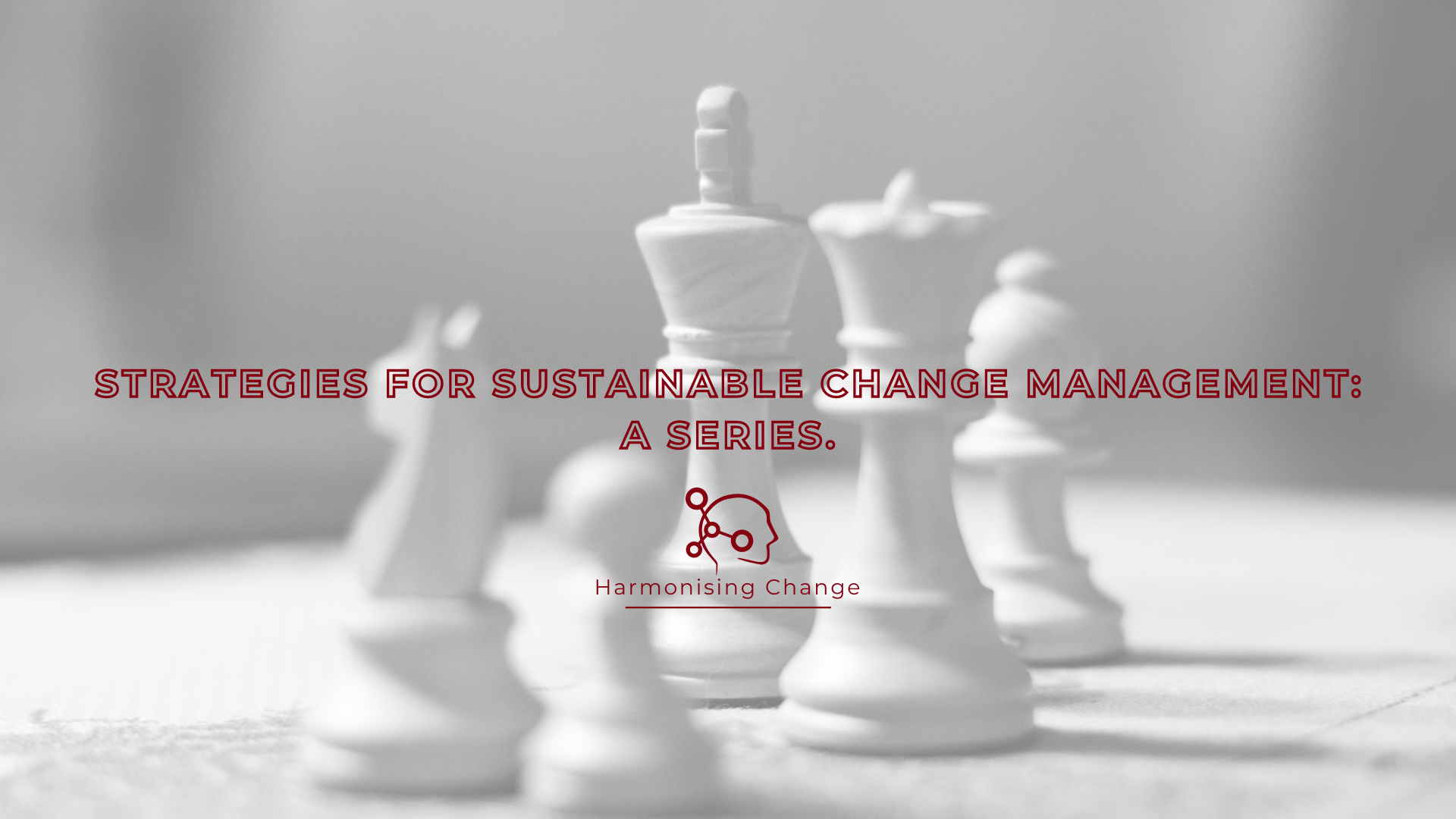
Strategies for Sustainable Change Management: A Series.
Welcome to the ‘Strategies for Sustainable Change Management’ series, where we delve into the art and science of navigating organisational transformations. Change is inevitable, and effective change management strategies are crucial for businesses to adapt and thrive in today’s dynamic environment.
In this programme, we will explore various renowned models and frameworks to guide you through the intricate process of implementing sustainable change within your organisation.
What are Change Management Strategies and why are they effective?
Change Management Strategies are systematic approaches and techniques designed to facilitate smooth transitions within an organisation. These strategies help manage the impact of change on individuals, teams, and the entire organisation. Effective change management is essential for ensuring that changes are not only implemented successfully but are also embraced and sustained over time.
According to a report by Prosci, organisations with effective change management are six times more likely to meet project objectives and exhibit higher levels of employee satisfaction and commitment.
This emphasises the significance of implementing well-thought-out strategies to navigate change successfully:
- Choosing the right change management strategy requires a thorough understanding of your organisation’s culture, structure, and the nature of the change at hand. Here are some key factors to consider:
Assess Organisational Culture: Understanding your organisation’s values, beliefs, and behaviours will help align the change strategy with the existing culture. - Analyse the Scope of Change: Different changes may require different strategies. Assess whether the change is incremental, transitional, or transformational to determine the most suitable approach.
- Engage Stakeholders: Involving key stakeholders from the beginning ensures their buy-in and contributes to the success of the change initiative.
In this series, we will explore a diverse range of change management strategies, each offering a unique perspective and methodology for managing change effectively. Here’s an overview of the strategies we will be covering:
- Kotter 8-Step Process for Leading Change: Developed by John P. Kotter, this model provides a structured approach for leading organisational change through eight sequential steps.
- McKinsey & Company’s 7-S Framework: Focused on seven interrelated factors, this framework helps organisations align and adjust their strategy, structure, systems, style, skills, staff, and shared values.
- Kurt Lewin’s Change Model: Often represented as Unfreeze-Change-Refreeze, Lewin’s model emphasises the importance of preparing for change, implementing it, and stabilising the new state.
- The Kübler-Ross Model: Originally applied to individuals facing grief, this model has been adapted for organisational change, detailing stages such as denial, anger, bargaining, depression, and acceptance.
- Satir Change Management Model: Developed by Virginia Satir, this model focuses on improving organisational communication and fostering a positive emotional climate during change.
- William Bridges’ Transition Model: Bridges’ model highlights the psychological and emotional aspects of change, guiding organisations through the process of transition from the old to the new.
As we embark on this programme, we invite you to join us on this insightful journey through the world of change management strategies. Whether you are a leader spearheading change, a team member adapting to it, or an enthusiast eager to expand your knowledge, this series aims to equip you with the tools and understanding needed for sustainable change.
Stay tuned for our upcoming posts as we deep-dive into each strategy, providing practical insights, real-world examples, and actionable steps to implement these strategies in your organisation. Let’s navigate the path to sustainable change together!
Contact Harmonising Change here.



